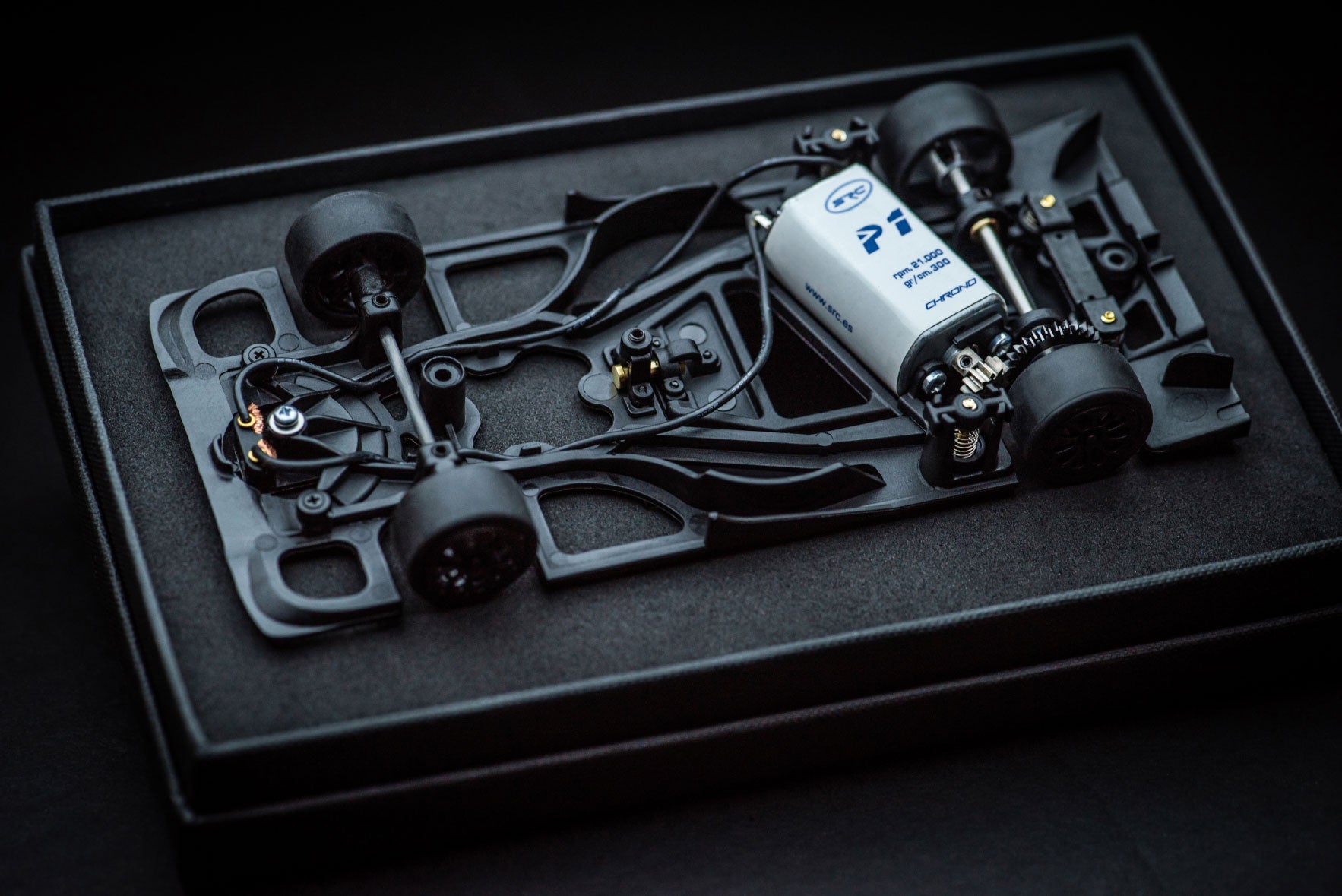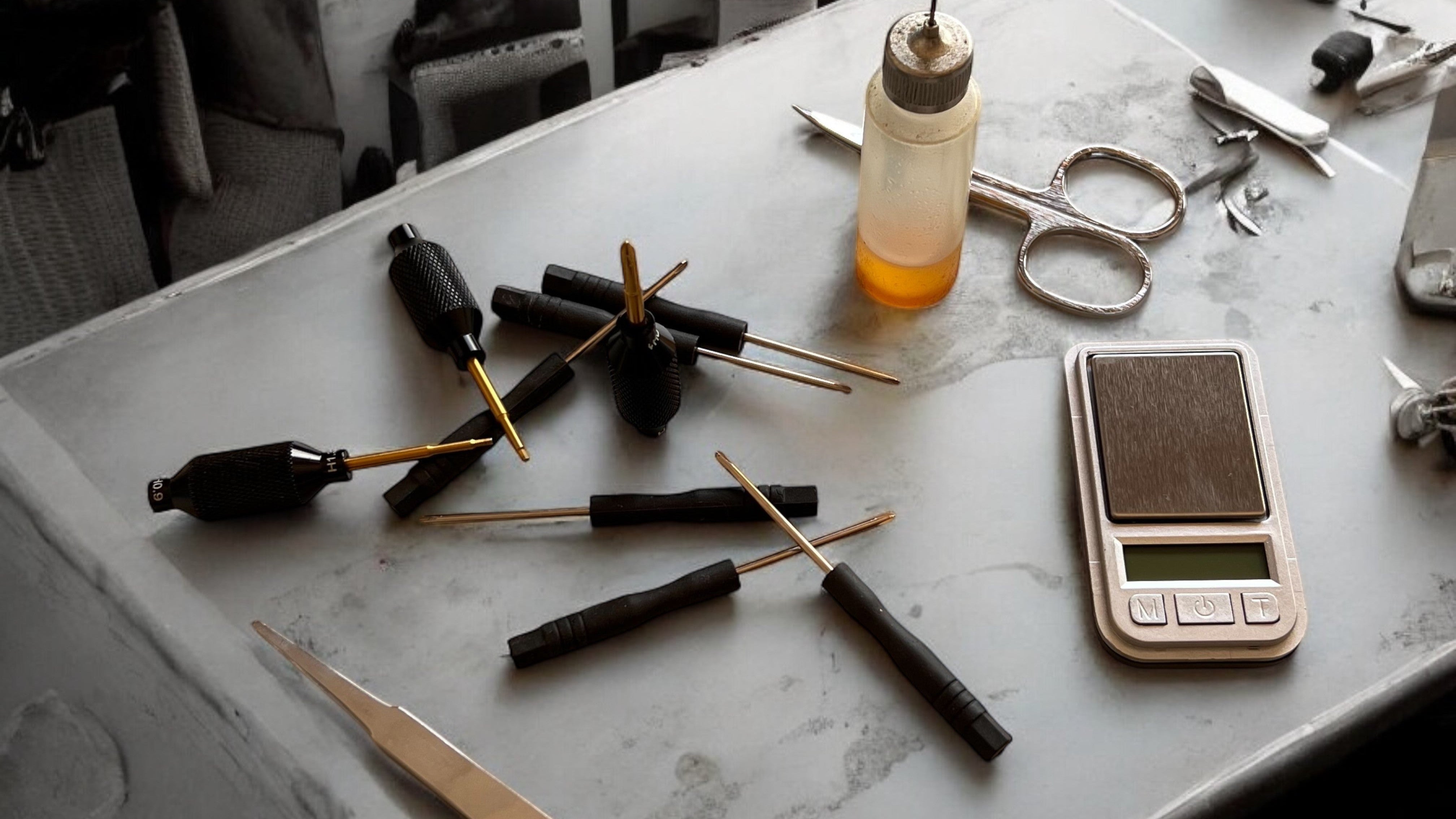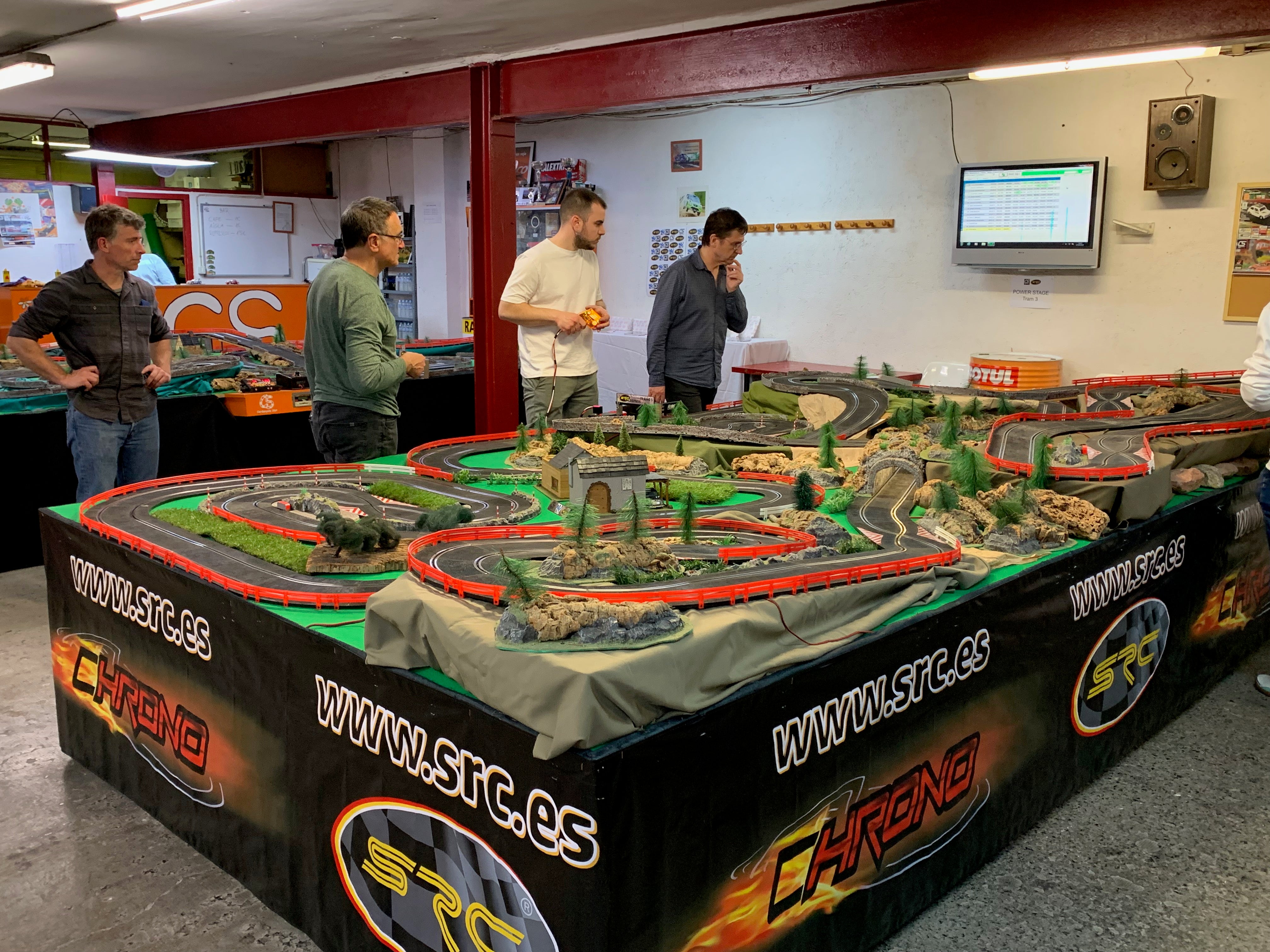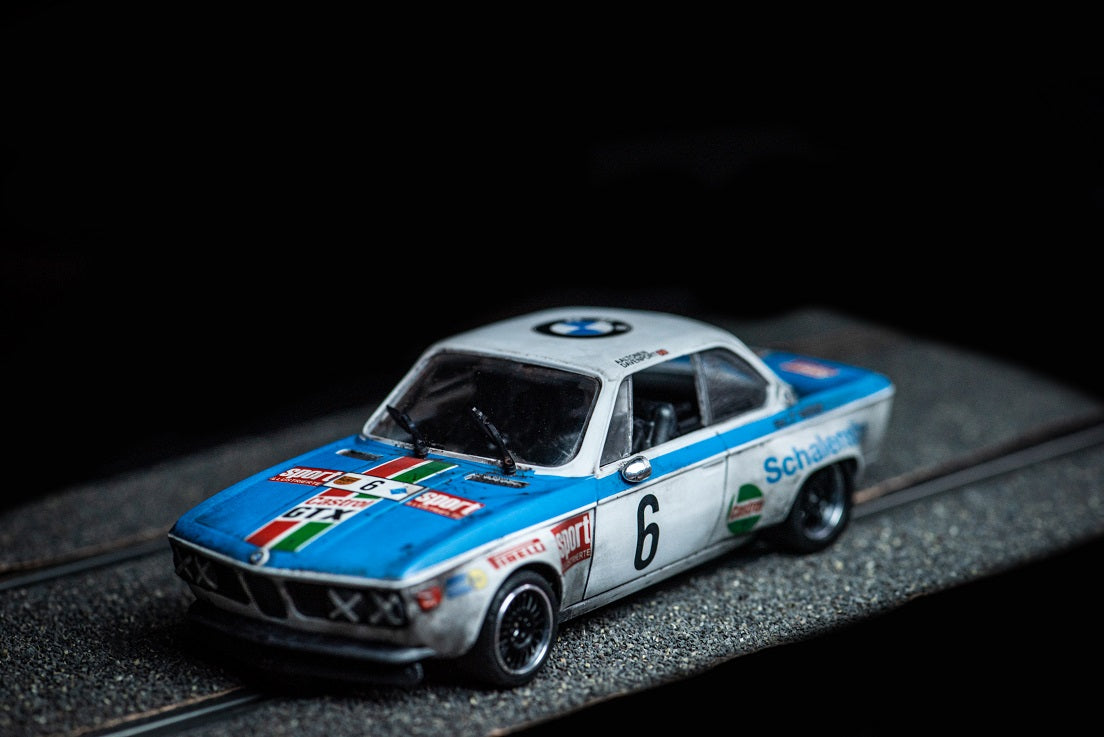Slot Racing Company has today revealed through its social networks the first image of its next BMW 2.8 CS at 1:32 scale. This is the car with which Rauno Aaltonen and John Davenport participated in the 1972 Olympia Rally, an old-fashioned rally that began in Kiel, in northern Germany, and ended in Munich, next to the Austrian border. The first version available will be with the Chrono Beyond configuration in kit form. We will be attentive to the details and final marketing dates of this new SRC model.


The new SRC Olympia Rallye 1972 BMW 2.8 CS is now available as a kit. It is the official car of Rauno Aaltonen and John Davenport, who had to retire in the 32nd of a total of 67 special stages due to a defective head gasket. The 3,500 kilometer event took place from August 13 to 19, 1972. It began in Kiel, a city in northern Germany, and ended in the south, in Munich, a week before the Olympic Games.
The 17000 rpm SRC M3 engine in inline position with independent suspension bed. The suspension guide is placed as far forward in the car as possible, making it very stable. The front axle can be adjusted with four studs; two on each side at the bottom of the front axle and two at the top.

Thanks to the Lexan interior, the weight remains just under 80 grams.


UPGRADE complete assembled chassis:
- 1 x Rally CHRONO version bodywork
- 1 x Light TC Cabin
- 2 x Head. 2 x Open helmet. 2 x Intercoms
- 1 x Windshield glass. 1 + 1 front grille lights + rear grille lights
- 2 x front indicators + 2 x rear indicators (calender)
- Front grille + bumper (painted/black) + rear grille (chrome)
- 2 x Front Wiper Blades
- Chrome body parts : 4 + 2 BMW logo, bumper, 2 x hood grilles, 2 x rearview mirrors + 2 x mirror
- 2 x Steel exhaust tail + pipe support + 2 x pipes
- Photo-etched front license plate
- 1 x BMW/SRC/CHRONO decal panel
- 1 x SRC Box (RC1051)
I always get excited when I see a DHL box from Spain because I know it's another SRC bomb! This BMW 2.8 Kit was no exception.
Let's do it!
The white body is crisp and smooth and only needed light sanding and a gentle stroke with the back of a utility knife. I do this with any details that I think might be lost with a few coats of primer/paint and varnish. It is washed with a soap that does not contain animal products or any other chemicals that could react with the paint. So it's vegan? HA HA HA. Then I let it dry overnight and prepare it for the primer. I use Mr Surfacer 1000 gray primer because that's what I had! A fine spray makes it easy to smooth, even cover. I like the gray because it makes the white paint "not so harsh" and has a vintage feel. After a few coats, I do a light wet sanding with 2500-5000 sandpaper and remove any imperfections. Sometimes I just use a paper towel instead of sandpaper. Let it dry for a day and then do the same but with Tamiya Racing White TS-7. A light layer, the second a little thicker and the final soft flood. Don't overdo it or it will leak! This last one takes a while to master, so practice with old kits.
Some painting tips: If you need to use spray paint in colder weather, let the paint sit in some hot tap water for a while before using it. It will heat up the paint and you will have good pressure again. Reduces the viscosity of the paint allowing it to FLOW better. Provides a finer spray and smoother finish. The sprayer's grip handle also helps with paint control. Use long strokes and practice, practice, practice.










Let dry for a few days.
Once the paint is dry, prepare your workstation for the decals:
Micro Sun
micro set
warm soapy water
brush
cutter
paper towels
swabs (Q-Tip)
Micro Set slightly softens the decal to make it more flexible and fit better to the surface of the model. Better adhesion of the decal to the model prevents small air bubbles from forming and results in an invisible support film for the so-called "painted look".
The Micro Sol is for the more difficult uneven surfaces found on models. It completely smoothes the decal to a microscale, allowing it to cover the surface of the model, perfectly adapting to surface irregularities without distortion.

Cut the decal out of the leaf with a craft knife and, holding it with a pair of reverse action tweezers, dip it in water for a few seconds and set it aside. The exact time the decal needs to be submerged in water depends on several factors, including the age of the sheet. Normally 10 seconds is enough, but if it doesn't slide out easily, put it back in for a few more seconds. While the decal soaks and lifts from its backing, brush some Microset onto the area where the decal will be applied. Slide the decal from its back onto the model and place it with a brush. Brush a little more Microset over the top and then let it soften for a few moments. Using a moistened (but not wet!) cotton swab (Q-Tip), very gently press the decal onto the surface, removing excess liquid and flattening/smoothing the decal as you go. Tamiya cotton swabs are good for this because they are wound very tightly and there is less chance of the cotton fibers coming loose and sticking to the decal. If there are any stubborn wrinkles or air bubbles that won't flatten out, carefully prick them with a pin or the tip of your knife and apply Microsol to the decal. You can repeat this as many times as necessary until the decal is completely flat, allowing it to dry completely between each coat. When you are satisfied that the decal is completely flat, apply another coat of gloss/matte varnish to seal it. At this point, the edge of the film should be completely invisible.
Carefully and lightly sanding the edges of the decal between coats gives an even better final result, if still necessary after all the tips mentioned above. Use very fine sandpaper for sanding and always wet so that the possibility of sanding is as small as possible. Sandpaper with a grit of 1000 and higher is preferred, with careful use up to a grit of 600 is still possible. Anything thicker than this is an absolute dud. This means that the chances of sanding off the decal or coating layer are too great. Coarse sandpaper also leaves excessively large scratches that cannot be easily covered with a new coat of paint.







Weather/Race Version: I love making the car look like it's in a race or rally with dirt on the road, dirt and mud! I wanted to make this car different and since it was a "rally" car I wanted a "racing look" so I used Vallejo acrylic paint on gray, heavily stained sections of the car that I know will look like it has been in a rally of 24 hours. When it dries, I take rubbing alcohol and wash the body with a Q-Tip or a brush. This gives the entire body a dirty patina and a great starting point. Washes can also be used to simulate fuel, oil and grease stains, as well as rust. Using a DRY BRUSH, pick up just a little bit of paint on the tip of the brush and then wipe most of it off with a paper towel or cloth. Then gently apply the brush to the desired area of your model, moving the brush quickly back and forth. You're not looking for a big blob of paint, but rather a subtle gradient. You can repeat the process using gradually lighter shades until you get the effect you want. I also like to use a toothbrush and dip it in diluted paint and then throw it over the body giving the mud splatter effect.
Dry brushing is a technique that requires practice to do well. Although it can be a quick way to highlight details, if used excessively you risk making your model look like it was painted with cake icing. I also like to use brush on varnish as a gloss and matte to highlight areas.










The chassis: After painting all the parts we move on to the chassis, it is 90% assembled and is a work of art. I do the front tires first with a TIRE RAZOR and then set the front axle ride height so the front tires only touch the track/setup bench. Tighten the 2 front bed bolts until snug and loosen the rear bolts 1/2 turn. This gives it a little float but not too much. For a loose car I like to tighten the bench. The rear gear cluster was perfect and just added some Sloting Plus grease and ran the car for 1 hour at 4 volts. NO added weight! I put Quickslick on the rear tires for "plastic" racing.
This chassis is super light and ultra rigid. Light interior with the best "heads" in the slot car industry! NO painted eyes! The bench system has a rear suspension that works great and gives the car a bit of up and down movement to help with tracks that are not smooth. The C-block mounts are so clever that they act as suspension and also hold the rear bushings in place! Comes in a bunch of colors! The M3/N engine is smooth and powerful and is even painted in a beautiful silver color! The suspension guide is like an anchor and keeps the braid glued to the rails! The wheels are lightweight and the "Alpina" hubcaps make them look real, I could go on forever, just look at the parts list! Decals and presentation box! etc etc.! It even comes with an extra "soft" chassis!

Track test: It's time to join the chassis to the body using 2 "SUPREMEX" screws and hit the track. My first test was at Jon Wang's "Slytherin Speedway," a 120-foot plastic racing track with elevation changes and long straightaways. The car was fast and with such a narrow stance it handled very well! Tons of brakes and NO vibrations with the original rubber tires. It handled the "corkscrew" and the "stepper" like a real Rally car and could push very hard. My only fault was that it was going so fast that it's hard to see all my beautiful work!


Conclusion: DO NOT fall asleep! Get this car! It's lovely!





